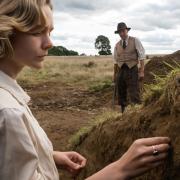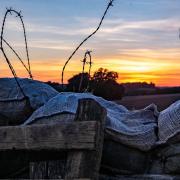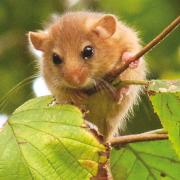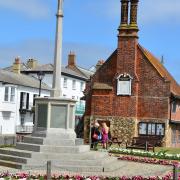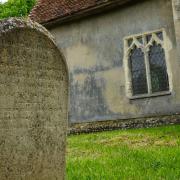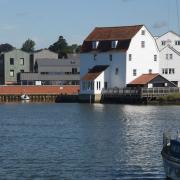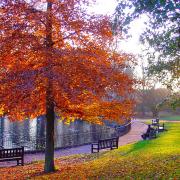Suffolk nature writer Matt Gaw describes the song of the skylark, what it looks like and how it rises into the sky

The rain stops slowly, like a stiff tap being turned off, to leave a wet, woollen sky that sags over the trees and hedgerows of this mid-Suffolk farm.
The paths, which skirt the fields where I am walking, have been transformed into a gluey, puddle-potted mud, and even though the sun is still struggling to cut through the spitball-greyness of the clouds there is a lightness to the land. It comes not from that unique post rain freshness, nor the early blooms of blackthorn blossom, but from the birds.
Over clouds of linnet and the tut of a blackbird comes the song of the skylark, a thread of golden, fluted notes that seem to sew earth and sky together. I slow my pace and then stop, turning towards the sound, hoping to catch a glimpse.
At first, I see just one, rising on fanning wings like a smut blown from a fire before it parachutes down as if winged by buckshot. All the while it sings and sings and sings.

Higher still and higher
From the earth thou springest
Like a cloud of fire;
The blue deep thou wingest,
And singing still dost soar, and soaring ever singest
(To a Skylark, by Percy Bysshe Shelley)
In the space of a minute, the first bird is joined by three others, silhouetted like quidditch snitches against the paleness of the sky. These singers are probably all males, giving voice to attract mates, to warn rivals that territory has been taken, but also to deter predators. Their songs, blown through the voice box, a double-barrelled syrinx no bigger than the nail on a child’s finger, wrap around the land like a cat’s cradle around fingers.
One bird, fluttering and falling, comes closer and closer until I can almost see the brown streak of its chest and its feathery punk-rocker crest. But the skylark is a world away from a three-chord stomp. In fact, aside from the nightingale, it’s hard to think of another bird whose song has been so celebrated in music and poetry.
Are you a bird lover? Click here to find out how to spot and photograph kingfishers in Suffolk.
Each of the skylark’s songs are made up of consecutive sounds, syllables, which are hardly ever repeated. Alongside the 300 syllables that each male can sing, the bird is also a fantastic mimic, snatching refrains from the call of the curlew and redshank, copying the jangle of the corn bunting and the melodious trill of the linnet.
The skylark’s virtuosity was once its downfall, with huge numbers of wild birds captured and caged for the entertainment of humans. Although such practices are thankfully now illegal, skylarks are still very much under threat. Between 1972 and 1996 the UK’s breeding population declined by 75 per cent, earning it an unwanted place on the RSPB ‘red list’ as a species of highest conservation concern.
The sweet, wild note of the skylark slowly muffled by the intensification of agriculture that saw crop diversity decrease and the use of food-source-destroying pesticides increase.
Yet, here, on this farm at least, which for the last seven years has been working with Suffolk Wildlife Trust to improve and create habitat for traditional farmland species, the skylark, along with barn owl, lapwing and yellowhammer are all doing well.
The skylarks quieten down, until all of them are hidden in the fuzzy growth of a field that has been left fallow for a year. I feel like I should thank them, applaud or cry out for an encore, but the skylark neither demands, nor wants, such things. The skylark might not be able to tell us, as the poet Shelley implores, “What sweet thoughts are thine”, but it seems they
could teach us a thing or two about giving without taking.
What to look for when you’re looking for skylarks
The skylark is a small brown bird, larger than a sparrow but smaller than a starling. It is streaky brown with a small crest, which can be raised when the bird is excited or alarmed, and a white-sided tail. The wings also have a white rear edge, visible in flight. It is renowned for its display flight, vertically up in the air. The skylark’s natural habitats are grassland, farmland, heathland, marine and intertidal, and upland.
Have you joined our Facebook group? Click here to find more beautiful images of Suffolk wildlife and landscape.




